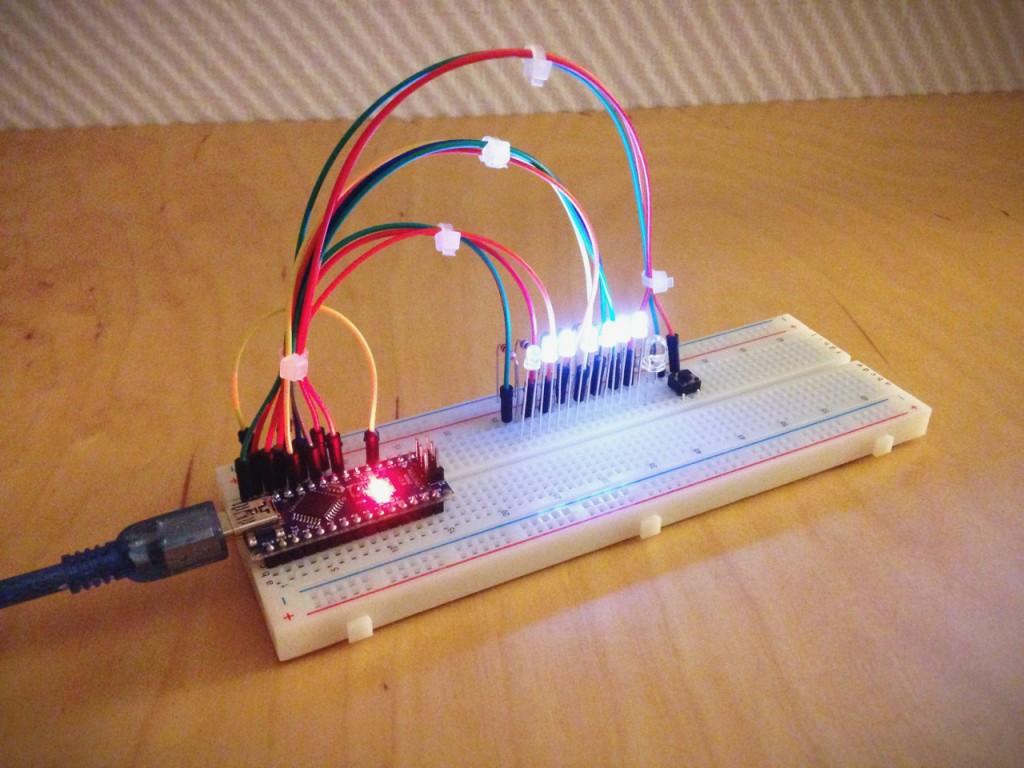Physical Computing
Gijs Gieskes gave a workshop about physical computing to our students.
Ronja Adler- Arduino-Project:
The Crabby Morse Owl ...
..is an arduino-experiment using the arduino feature to influence LED
abilities.
This dotty contemporary is able to send every message consisting latin
alphabet components.
Based on the classical morse-system (decoding letters and numbers in long
and short signal-sequences) this owl can communicate with blinking light
signals about approximately 10 metres (provided an absolut dark
environment). The short- and long terms are translated into the interval
the owl needs to look from the left to the right (final Psychose-version:
from out-to inside).
The prototype is a perfect method to spread subconscious messages. You
could also use it as a diffuse lightning or psychodalic reminder
(provided you can encode it).
Arduino Volume Control Cat:
by Sophie Schulz and Benjamin Glock -
The Volume Control Cat measures different kinds of tones appearing in
music. We used Arduino to activate coloured leds on our pinboard. The
electric circuit looked barely impressive, so we decided to solder the
Arduino chip and several cables and attachments to a circuit board, which
is hidden in a papier mâché cat. It is easy to connect the cat to your
computer. You simply use the USB-cable at the collar, then connect the
volume via AV (required contact is located at the cat’s stomach).
This is what happens:(video)
Tone measurement
Green = calm
Orange = average
Red = loud
Think about what’s possible in seven minutes: Cooking some pasta al dente, giving a presentation or have a intense workout. The Arduino project „seven minutes“ is the most simple way to keep track of these seven minutes - by seeing how many minutes have already passed and how many are going to come. It’s as simple as it can get - just press the button to start the countdown.
pathway week physical computing